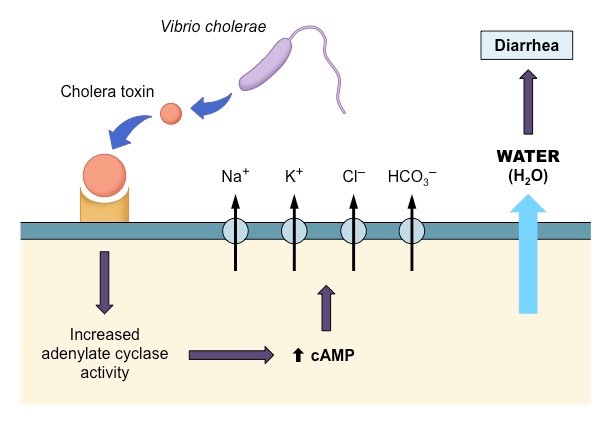![]()
Application:
• Helicobacter pylori infection as a cause of stomach ulcers
Stomach ulcers are inflammed and damaged areas in the stomach wall, typically caused by exposure to gastric acids
- There is a strong positive correlation between Helicobacter pylori infection and the development of stomach ulcers
Helicobacter pylori is a bacterium that can survive the acid conditions of the stomach by penetrating the mucus lining
- H. pylori anchors to the epithelial lining of the stomach, underneath the mucus lining
- An inflammatory immune response damages the epithelial cells of the stomach – including the mucus-secreting goblet cells
- This results in the degradation of the protective mucus lining, exposing the stomach wall to gastric acids and causing ulcers
- The prolonged presence of stomach ulcers may lead to the development of stomach cancer over many years (20 – 30 years)
- H. pylori infections can be treated by antibiotics (previously, stomach ulcers were considered stress related and not treatable)
Stomach Ulcer Formation

![]()
Application:
• Dehydration due to cholera toxin
Vibrio cholerae is a bacterial pathogen that infects the intestines and causes acute diarrhoea and dehydration
- The associated disease – cholera – can kill within hours unless treated with oral rehydration therapies
V. cholerae releases a toxin that binds to ganglioside receptors on the surface of intestinal epithelium cells
- This toxin is internalised by endocytosis and triggers the production of cyclic AMP (a second messenger) within the cell
- Cyclic AMP (cAMP) activates specific ion channels within the cell membrane, causing an efflux of ions from the cell
- The build up of ions in the intestinal lumen draws water from cells and tissues via osmosis – causing acute diarrhoea
- As water is being removed from body tissues, dehydration will result if left untreated
Mechanism of Action of Cholera Toxin

